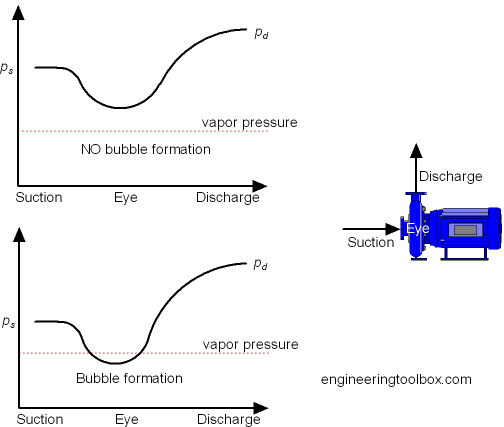NPSH is actually pressure at the suction of a pump. It must be positive for the pumping process to continue. It determines whether the pump will loose suction or not. It is the sum of
1) static pressure (act in positive)
2) pressure head (acts in positive)
3) suction lift (acts in negative)
4) vapor pressure of pumping fluid at pumping temperature (acts in negative hence it comes with negative sign)
NPSH = static pressure + pressure head - suction lift - vapor pressure
If this value results in a negative number (i.e, suction lift and vapor pressure are more than the sum of static pressure and pressure head), then the pump will loose suction and pump will no longer pump the liquid. You need to increase static pressure and/or pressure head, and/or you can decrease suction lift and/or vapor pressure.
If this value results in a positive number, then the pump will continue to pump the liquid.
An air gap comes when pump looses the suction and since the pump does not make the air flow, the liquid will remain static. Running the pump in this condition for a long time would result in damage to the pump.
Types of NPSH:
NPSH is of two types:
1. NPSH available (NPSHA):
It is the pressure "actually present at the suction" of an installed pump calculated on the site using the same above equation.
2. NPSH required (NPSHR):
It is the "minimum pressure that must be present" at the suction of the pump to pump the liquid at desired flow rate. If the suction pressure is less than NPSHr, the pump will no longer pump the liquid.





No comments:
Post a Comment